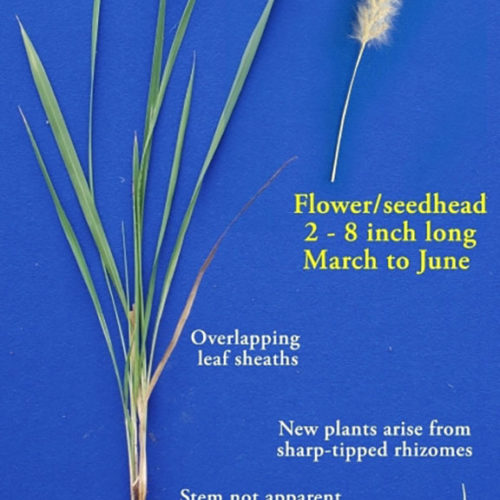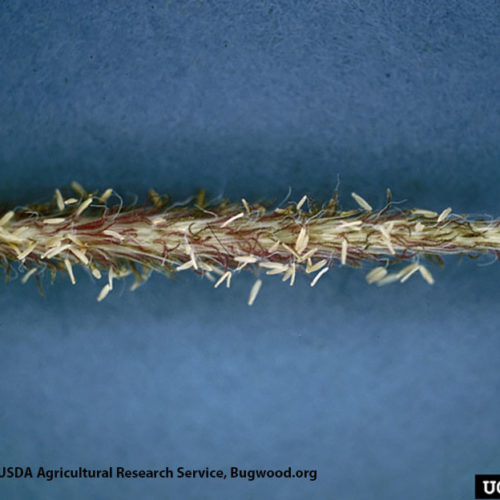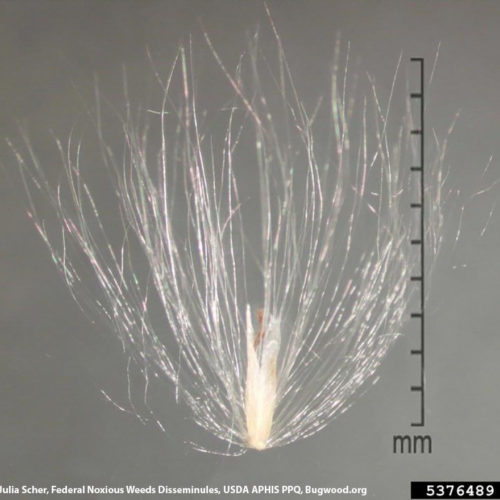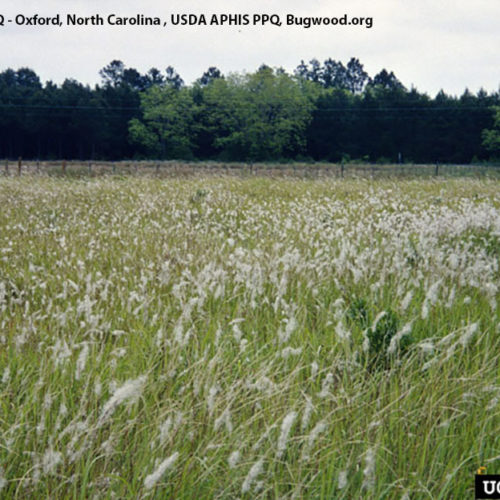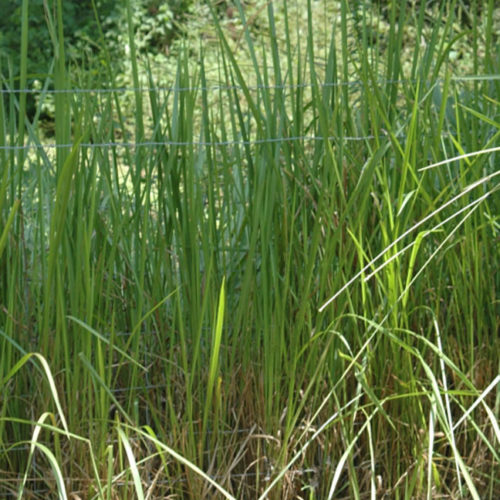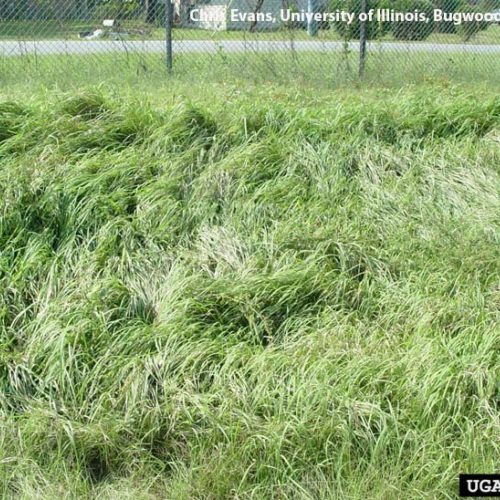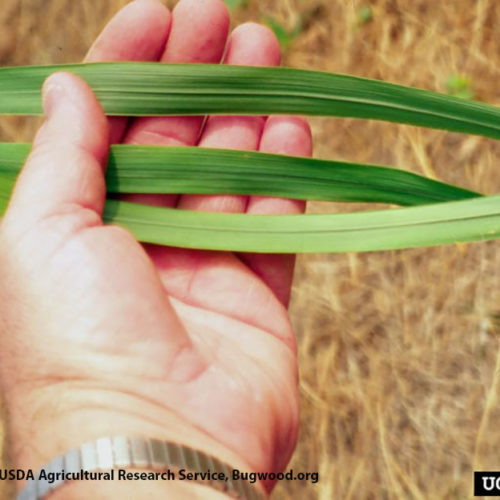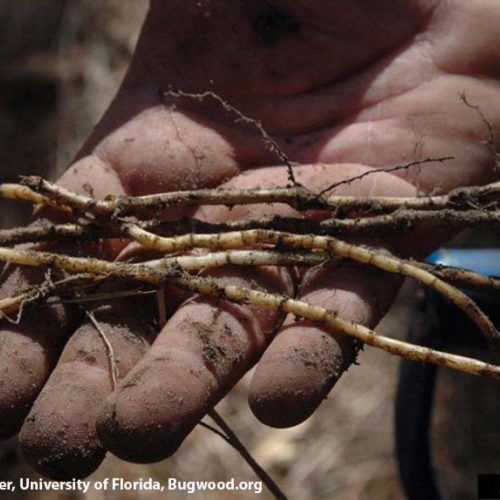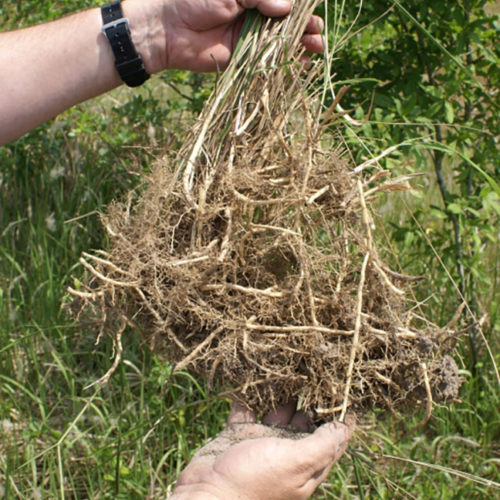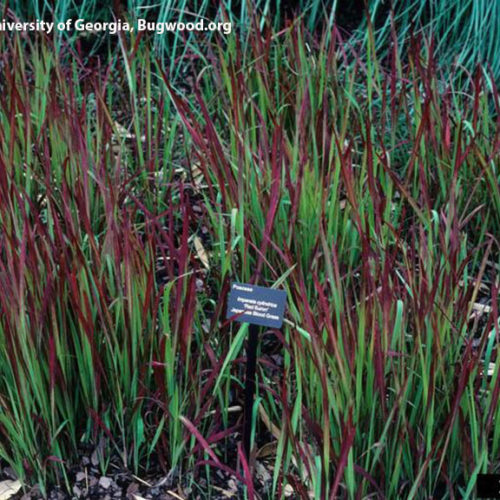Cogongrass
Imperata cylindrica
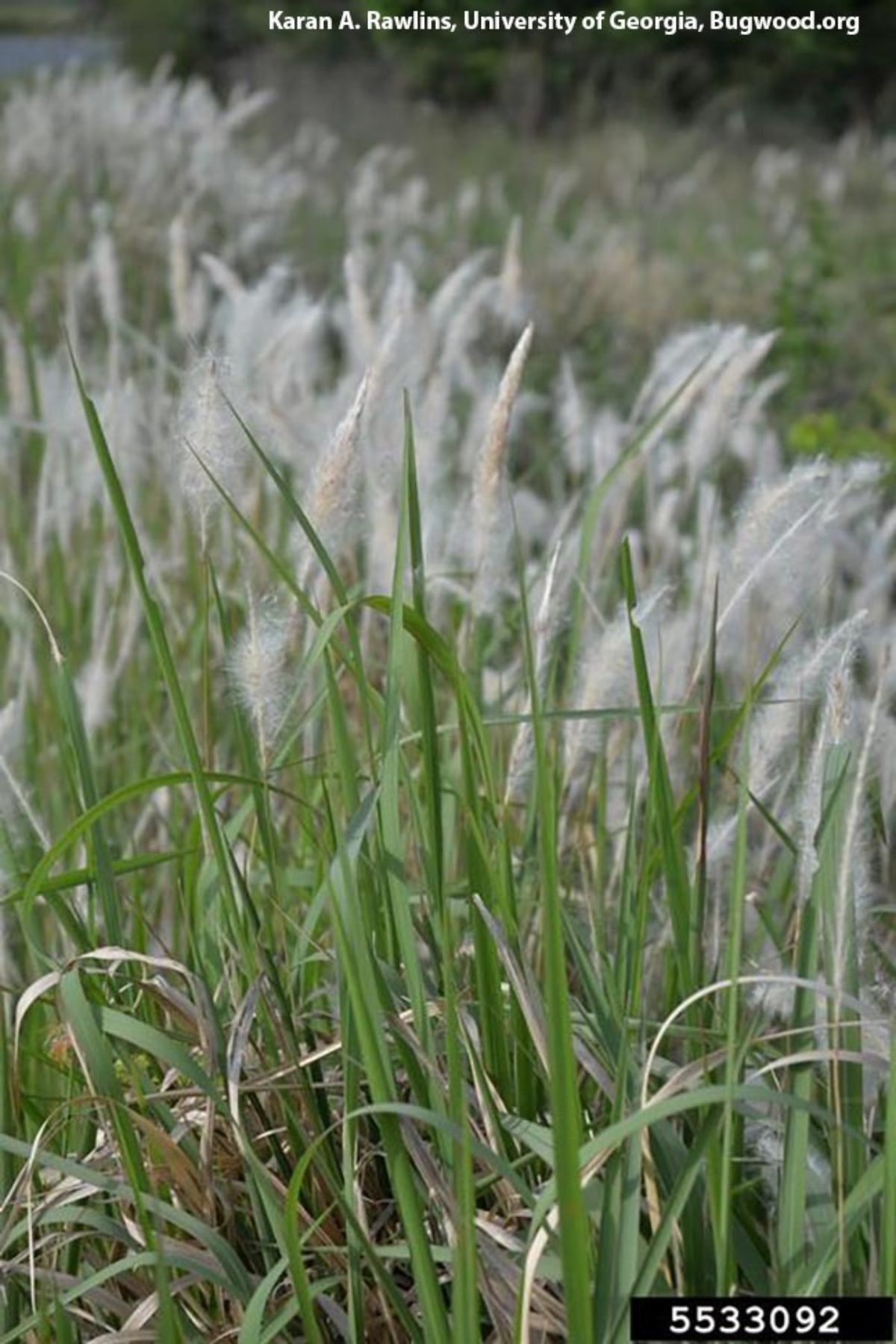
Family: Poaceae
Other Scientific Names:
Imperata arundinacea, Imperata koenigii
Other Common Names: alang-alang, blady grass,
Weed class: monitor list
Native to: parts of Asia and other areas depending on variety
Is this Weed Toxic?:
not known to be
Why Is It a Noxious Weed?
This plant is on the monitor list - it is not a listed noxious weed in Washington. Please contact its sponsor Tricia MacLaren at tricia.maclaren@kingcounty.gov to report locations in Washington. Click here to learn more about the monitor list.
How would I identify it?
General Description
Cogongrass is a perennial grass that spreads by rhizomes and is a known invader in the southeastern United States. This is a highly variable species with five varieties. While the species is on the federal noxious weed list, its ornamental cultivar 'Red Baron' is commonly available for sale in nurseries. 'Red Baron' is smaller and less aggressive than the species, with red markings on its leaves. Read more under the cultivar information on the BugwoodWiki website and APHIS's Weed Risk Assessment.
Flower Description
The inflorescence is a spike that is typically 2 to 8 inches long, whitish to silvery-whitish in color. Plants are easiest to find and identify when it in bloom, typically spring to early summer.
Leaf description
Leaf blade length varies in size, typically up to 4 feet long by 1 inch wide. Blades have a whitish midvein that can be off-center. The leaf sheath overlaps and can be hairy. Its ligule is hairy and is a thin-fringed membrane. Leaf orientation varies, can be upright, flat or drooping. Leaf edges are finely toothed. Overall color can be yellowish-green.
Stem description
Cogongrass can appear to not have a stem, with leaves arising directly from, or close to, where it emerges from the soil. In the SE United States has formed dense, circular infestations.
Where does it grow?
Click here to see distribution information of cogongrass in the United States from EDDMapS.org.
How Does it Reproduce?
Cogongrass spreads by seed and rhizomes. Seeds are wind-blown and plants are noted to be able to produce up to 3,000 seeds. Plants form a dense network of rhizomes and can spread many feet in the soil each year. Rhizome tips are a sharp point that can actually pierce the roots of other plants. Rhizomes look to be segmented and are covered with paper-like scales. Rhizome fragments can sprout into new plants. Rhizome fragments can readily hitchhike on equipment and vehicles to establish new infestations.
How Do I Control It?
Manual or mechanical control alone is not usually effective. Establishing a competitive stand of desired vegetation will work, especially when combined with physically or chemically removing cogongrass
For More Information
Comprehensive information at the Cogongrass website
Cogongrass information from Open Herbarium
APHIS Weed Risk Assessment of cogongrass (Imperata cylindrica)



